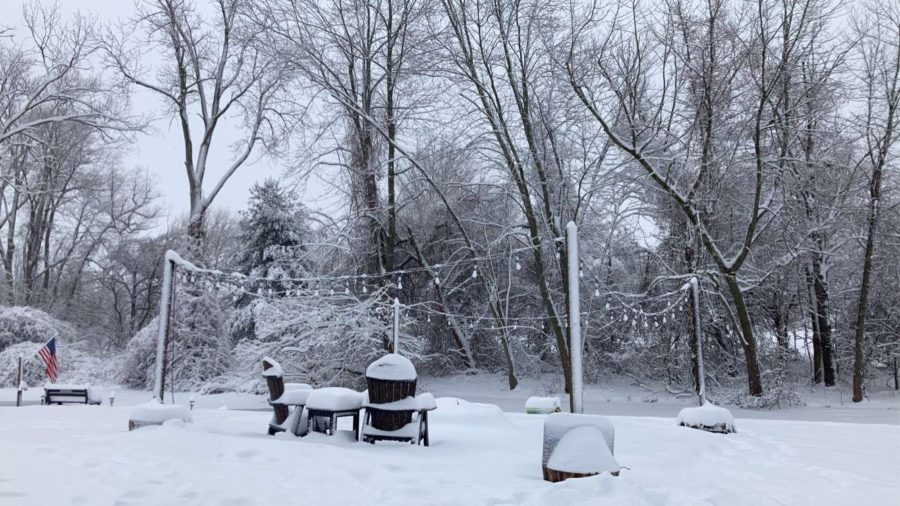Beyond the Snow Day calculator: a look into what actually goes into deciding if PPS will have a snow day
On Thursday, January 6, Portage Public Schools had its first snow day of the year. The next day, when weather and driving conditions appeared to be worse, school was in session. This led many families and students to wonder how the decision to have a snow day is made.
“Snow day decisions can be pretty complex as there are so many factors that come into play,” PPS superintendent Mark Bielang said. “A snow day cannot be called just because snow has fallen. Our ability to plow parking lots and make them accessible to staff and students, recommendations from local police agencies, the ability for our buses to navigate their routes, that varies depending on how much snow is being plowed, our ability to have enough bus drivers to cover our routes are all things that come into play.”
News Channel 8 meteorologist Bill Steffen said that he believes that, when a district is deciding whether or not to have a snow day, the answer should be yes “when the safety of students and staff is a significant issue.”
Michigan winters are infamously harsh, and sometimes driving conditions might not actually be as bad they seem. “You may have a day when there is 5″ of light, fluffy snowfall with no drifting. Plows have been out and roads are in pretty good shape.” Steffen said. “It may snow only half an inch, but there is a strong wind that is causing a lot of blowing and drifting snow. With the drifting, roads may deteriorate quickly after the plow passes.” Freezing rain can also be a huge problem when it comes to road conditions. According to WUSA9 meterologist Melissa Nord, “just 1/10th of an inch of freezing rain can cause damage and needs to be taken seriously.”
Freezing cold temperatures could be another reason schools could get shut down. “Extreme cold poses hazards for children who have to wait outside for transportation (bus stop),” said News channel 3 meteorologist Keith Thompson. “School should be canceled due to weather when conditions make it unsafe for students to attend. Usually, that means snow, but it can also mean extreme cold.” Not only are students waiting outside at the bus stop, but with Covid protocols, students now wait outside the building until right before school starts. Sophomore Maggie Clark said, “[snow days] should be called when it is too cold for children to be walking to school or waiting outside for more than 5 minutes. Students are risking getting very sick and/or possibly getting frostbite or something along those lines.” According to the Mayo Clinic, temperatures ranging from 0 to -15 degrees, frostbite can start in as little as 15 minutes.
Students believe that the district should take into account the unique situations of high school drivers as well, many of whom are new drivers with little or no winter driving experience. Junior Sierra Williams believes that a snow day should be called, “when the roads are extremely bad, and it is hard to see in traffic.” She also highlights the reality that due to parents moving, school of choice, or custody arrangements, many high school drivers find themselves with longer than average commutes. “Many students also live outside of Portage and weather conditions are bad where they are. There needs to be more consideration for students who have to drive more than 25 minutes,” she continued.
Junior Addison Bobbio would like more advance notice of a school closure if at all possible. “The night before, if roads are bad, a snow day should be called especially if there is going to be rain and very cold temperatures,” she said. She is also in favor of more flexible and creative ways to keep students safe. “If the roads are bad enough in the morning to where they are icing over, we should at least have a delay to start,” she added, “and if they do not get better, call school off for the day.”
Whether it is calling the day off or going to school, the district ultimately does what they feel is best for everyone. “It’s important to remember that each school district’s superintendent is responsible for making the decision whether to cancel school,” said Thompson.





Ben Knight • Feb 21, 2022 at 1:20 pm
I never knew all of the factors that go into a snow day. This was a very good and informative article.
Chloe Clarke • Feb 21, 2022 at 1:16 pm
I really like this article, it has information and sources from multiple grades, and even information from Channel 8. I love this, very informative!